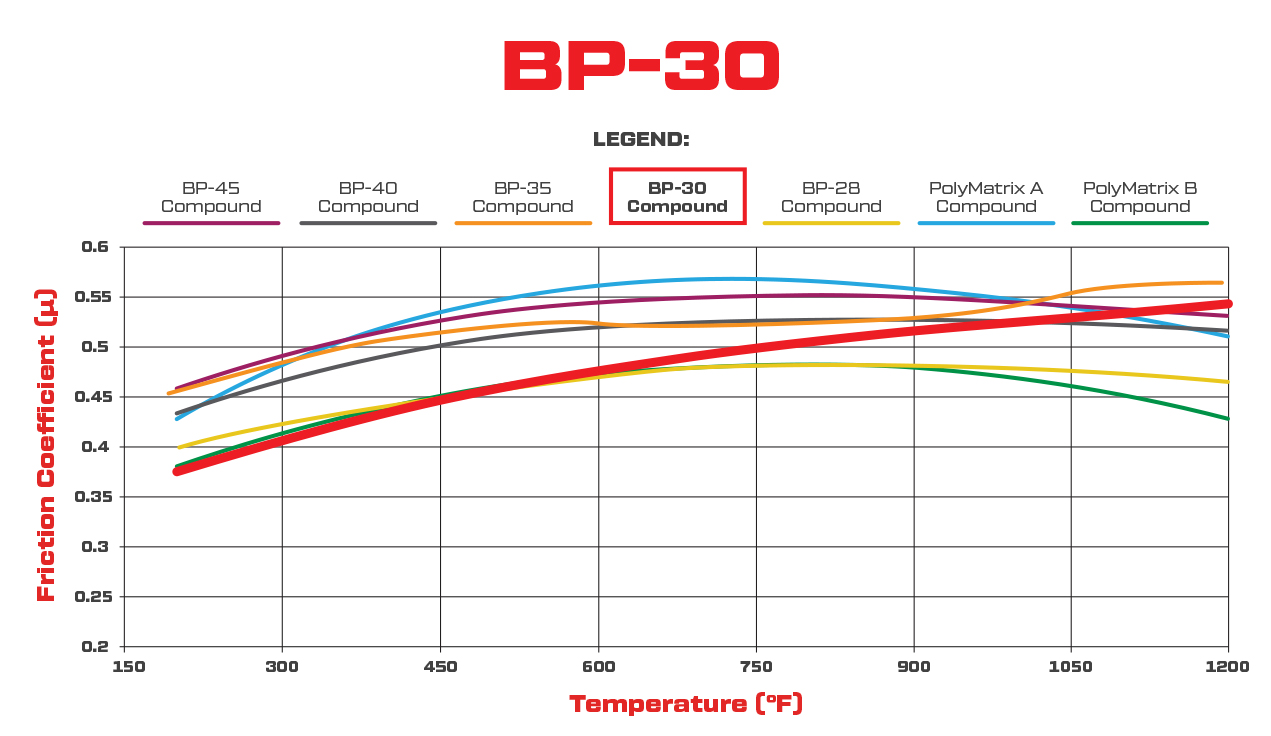High-Temperature Racing Pad : Pad#: 6812
150-14770
| Pad Dimensions | |
|---|---|
| Thickness(in) | .49 |
| Area(in²) | 3 |
| Volume(in³) | 1.1 |
| Beded | N |
| UPC Number | |
| UPC | 889545083156 |
BP-30 Compound
Pad Characteristics
- High friction pad with medium initial response, rises with increased temperature
- Medium low temperature response
- Low wear rate during sustained high heat braking
- Predictable and linear response with excellent modulation
- Very high heat fade resistance
- Sold Individually
Pad Applications
- Racing only - Not for street use
- Road course
- Heavy duty pavement oval
- Drag racing stainless
- Sprint cars SAS
- Titanium and Stainless
- Club sport racers
- Track cars with ABS
Rotor Material
- Steel
- Stainless Steel
- Iron
- Super Alloy
- Titanium

 BP-30 Friction Coefficient and Temperature Values
BP-30 Friction Coefficient and Temperature Values
The above friction data (μ) was recorded through braking cycles from 95 mph to 40 mph at a 0.5g deceleration. Snubs were consecutively done until rotor temperature reached 1300°F. This graph represents average data and is for general trend visualisations only comparing Wilwood pads. Chart data should not be used in comparison with other manufacturer's data. Test conditions, variables, and environment can affect test results.
Temperature range and overall friction value are the primary considerations for pad selection. The pads must maintain the proper amount of friction for stopping power within the temperatures that will be realized on the track. Overall wear rate must also be considered. For most asphalt and road race applications, compounds in the high-temperature range over 1000°F are usually necessary. Dirt track, drag race, and street performance applications usually operate at temperatures between 500° and 1000°F. Keep in mind that these are general ranges and not absolute values. Many factors and unforeseen influences can affect brake temperatures. The best indicator for pad selection will always be on-track performance. If pad fade (friction loss) due to overheating occurs, improved cooling, a heavier rotor, or a higher temperature range pad may become necessary.








